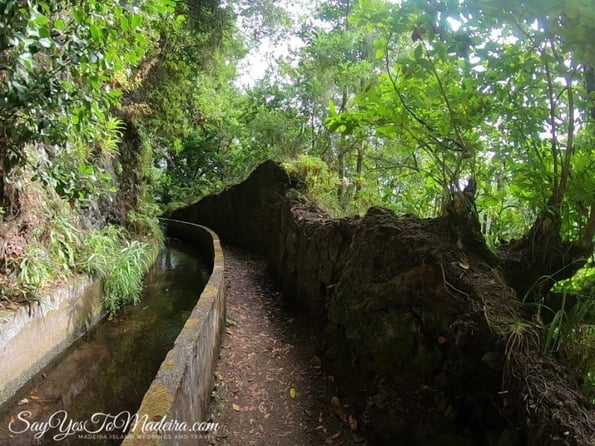
~ Written by Edyta of the blog Say Yes to Madeira. Explore her blog for a complete guide to what Madeira has to offer!
When visiting the Madeira archipelago, you will have a chance to learn some interesting vocabulary. Here are some useful words you will often encounter, plus a pronunciation guide to the island’s most frequently mispronounced town names and attractions.
Most tourists on Madeira love caminharto hike with a guiaguide along the levadasaqueducts, water channels or veredastrails, paths . There is a wonderful network of PR’s – percursos recomendadosrecommended trails . Many of those trilhostrails lead through the laurisilvalaurel forests , full of giant samambaiasferns , impressive cascataswaterfalls , and beautiful lagoaslagoons, lakes, ponds . There are so many hikes that let you explore the beauty of Madeira!
Finding the Good Spots
With all this beauty surrounding you, you should probably learn the word miradouroviewpoint, observation deck . When driving around the island, as soon as you see a sign with that word, follow its directions, as there you will see some beautiful as paisagenslandscapes, scenery .
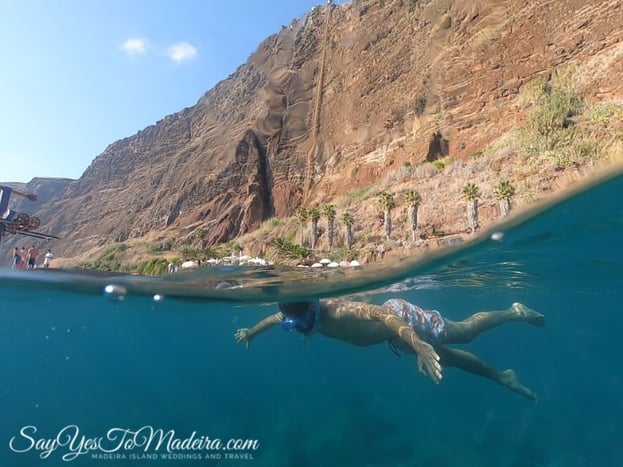 You can also look for teleféricocable car signs, as they will bring you to one of the many cable car stations on the island. They typically take you down a falésiathe cliff to a secluded spot called fajã . A fajā is a piece of flat land at the foot of the cliff, cut off on one side by a cliff, and the other by water.
You can also look for teleféricocable car signs, as they will bring you to one of the many cable car stations on the island. They typically take you down a falésiathe cliff to a secluded spot called fajã . A fajā is a piece of flat land at the foot of the cliff, cut off on one side by a cliff, and the other by water.
When visiting Funchal, the island’s main city, you will have a chance to explore two beautiful jardins botânicosbotanical gardens , old fortesforts or admire beautiful arte de ruastreet art .
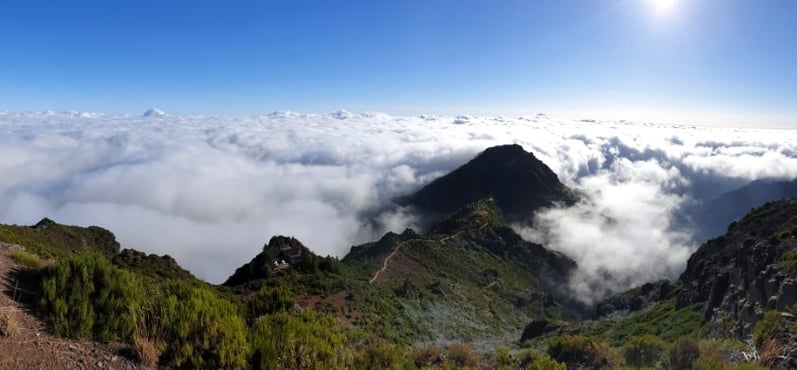 Although quite delicious, do not drink too many ponchasa popular alcoholic beverage in Madeira , as in the morning, you might want to wake up early, and chose a lovely spot for watching o nascer do solthe sunrise above the beautiful montanhasmountains .
Although quite delicious, do not drink too many ponchasa popular alcoholic beverage in Madeira , as in the morning, you might want to wake up early, and chose a lovely spot for watching o nascer do solthe sunrise above the beautiful montanhasmountains .
Feeling Adventurous?
Why don’t you try one of these exciting activities?:
Or, take a boat or catamarãcatamaran tour and go see the adorable dolphins, baleiaswhales , and turtles that swim in the water surrounding Madeira.
In Case You Get Lost…
 If you want to ask a local for directions in Madeira Island, you may need to know how to say the names of these places:
If you want to ask a local for directions in Madeira Island, you may need to know how to say the names of these places:
Balcõesa trail and viewpoint in Madeira
Cabo Girãoa sea cliff in Madeira
Calhau da Lapaa pebble beach area in Madeira
Caniçala village in Madeira
Fajã dos Padresan organic farm in Madeira
Fajã da Rocha do Navio
Garajaua nature reserve in Madeira
Gaulaa village in Madeira
Miradouro Pico do FachoFacho Peak Viewpoint
Pico Ruivo
Pico do Arieiroa mountain in Madeira
Poço dos Chefes
Ponta de São Lourençothe easternmost point of Madeira
Porto Moniza coastal town in Madeira known for its lava pools
Seixala village in Madeira, known for its black sand beach
Do Not Make These Mistakes on Madeira Island
And last but not least, two extra tips:
-
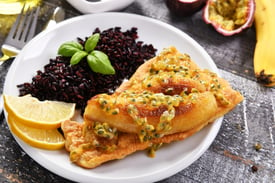
espada 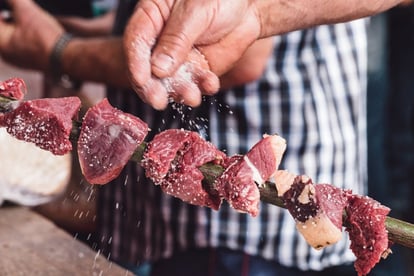
espetada espada vs espetada – These two words sound similar and look similar, but they mean two different things: a espadathe black scabbard fish is a common fish in Madeira, usually served with a baked banana, while espetadabeef skewer is a beef skewer, usually grilled in a traditional oven on a bay laurel stick;
- bolo de caco – This is a freshly baked and delicious Madeiran garlic bread. When ordering, make sure you say bolo de cacoMadeiran garlic bread and NOT bolo de caca, or bolo de cocó 💩 – cocópoop (slang) .
Let’s Practice!
Now you can put some of this vocabulary into practice in an audio Shorty dialogue between two friends who are discussing Madeira travel plans: A Ilha da Madeira
Then get more travel inspiration over at Edyta’s blog: Say Yes to Madeira.
To prepare for the trip, Practice Portuguese members can learn even more useful travel phrases in these Units:


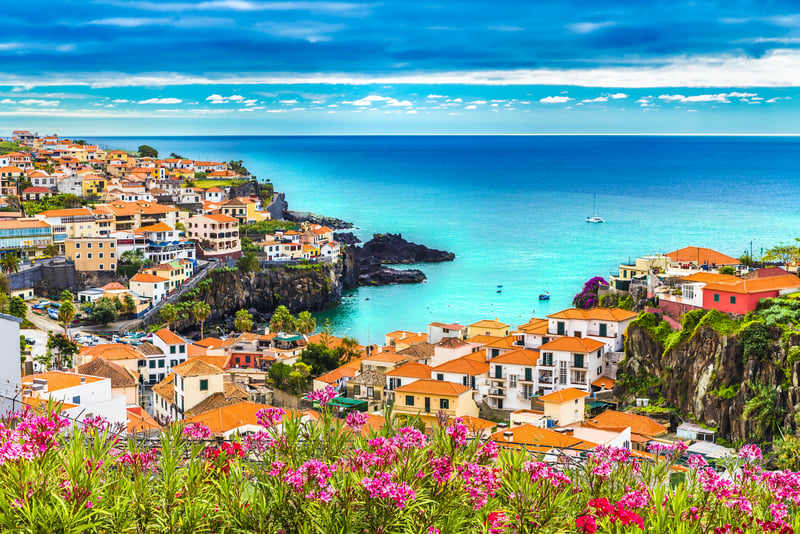



Hi.
Sorry if this is covered elsewhere, but if not, it would be well worth letting people know how to order coffee in Madeira. A Portuguese friend of my son recently visited Madeira from Lisbon, and he had no idea what “um chino” was in coffee terms. I think that while most of the terms for coffee are the same as on the mainland, there are two main differences that I’m aware of here in Madeira. If you want a larger black coffee, you ask for “um chino” rather than “um abatanado”, or for a milky coffee ask for “uma chinesa” rather than “uma meia-de-leite”.
I have read that “um café com cheirinho” on mainland Portugal is the name given to an espresso with aguardente, and in Madeira it is apparently “um cortadinho”, but I cannot be certain as I have never ordered one.
One website I visited summarised coffee in Portugal as follows (with my input in brackets): “An abatanado (or chino in Madeira) is similar to an Americano, but it’s really not the same (although it’s called an Americano in Porto). Similarly a meia de leite (or chinesa in Madeira) is similar to a flat white, and a galão is similar to café au lait or latte. But again, it’s really not the same. Instead, just order a coffee without any preconceived notions of what it should taste like………”
Beer:
Most bars and restaurants in Madeira will serve you the local brew “Coral” if you ask for a beer (and very refreshing it is on a hot day), but some serve Super Bock. Ask for “um fino’ for a small beer (20cl); “um balão” for a medium beer (30cl); “uma caneca” for a large beer (50cl). Having said that, I heard an English tourist say to a waiter in Funchal “Gimme a pint, mate” and it seems he was understood!
By the way, saying “Queria…..” seems to be the recommended way to say “I would like…..”, but I remember reading once that “Gostaria de…..” also means “I would like…..”. Can these be used interchangeably, or would the latter not normally be used?
Olá, Michael! Thanks for your feedback on local vocabulary – we might also need to get some help from a Madeiran 🙂
“Queria…” and “Gostaria de [pedir]…” can be used interchangeably, but people tend to go for the former. It’s simpler and more straight to the point.
My family is from São Miguel island (I am first generation Canadian). I always enjoy learning the many ways that you can order coffee in the different regions of Portugal. We’re going to Madeira for the first time in March and I’m wondering if using my usual “café cheio” will be ok or if there’s something more appropriate to say. I’m looking for a long espresso. Obrigada!
In Madeira they commonly use the term bica for coffee. So, you can ask for a bica cheia. However, you should be OK with café cheio! They all know that a bica is coffee. 🙂
Thank you!